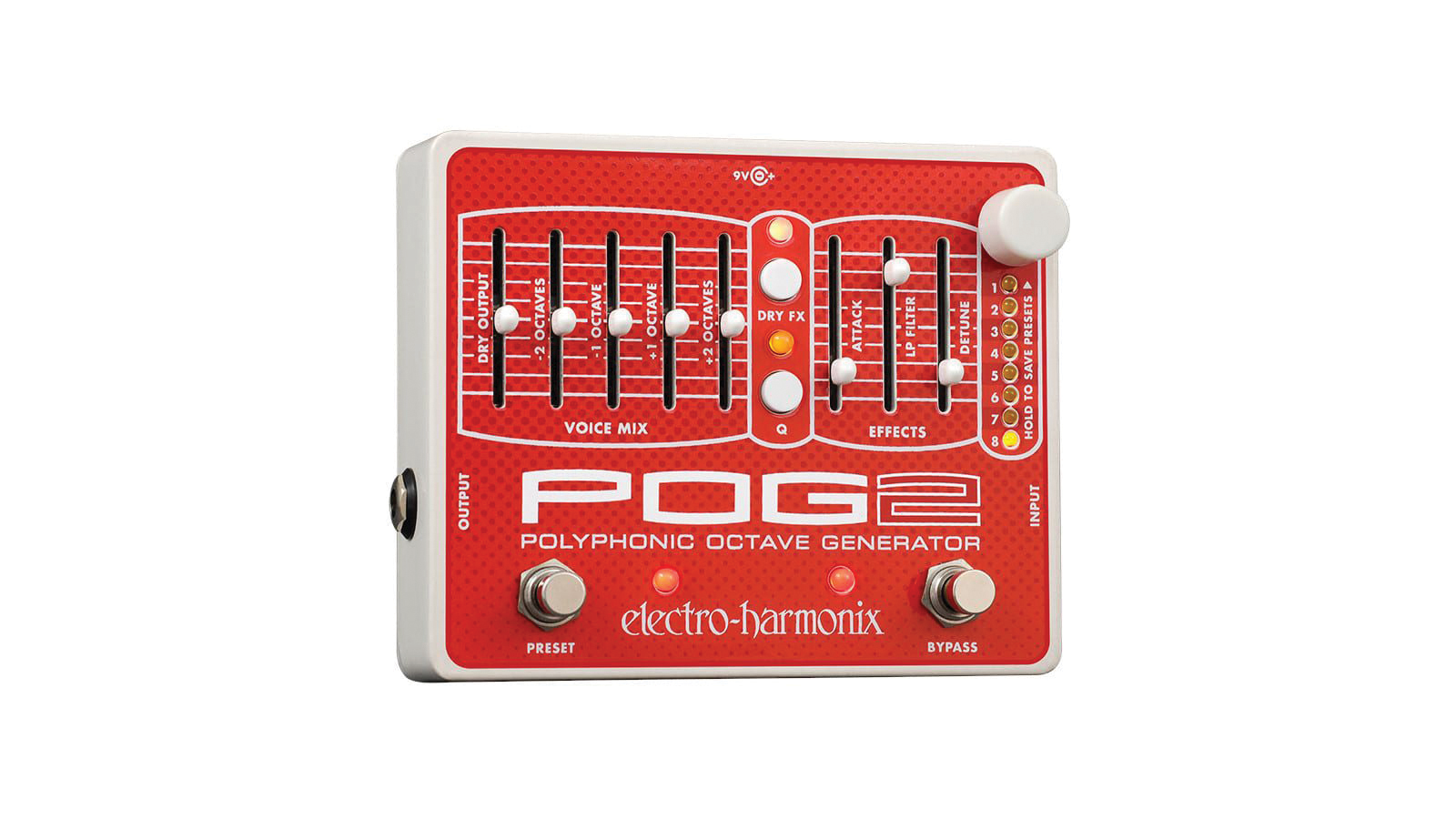Electronic guitar: using octave pedals to extend range
Pedals like Electro-Harmonix's POG2 can be used to imitate other instruments and produce otherworldly tones

Analogue octave fuzz pedals can be used for interesting effects, and are great for producing Sitar-esque and metallic sounds. Those sounds are unavailable in digital octave pedals like the Electro-Harmonix POG or the T.C. Electronic Sub ‘n’ Up. But there are obviously other sounds at hand in POG and its ilk that are impossible to achieve with an old-school octave fuzz.
Analogue octave pedals like the original Boss Octave OC-2 and Pearl OC-07 offered options for one and two octaves down. Though they produce a unique sound that some like, the tracking is iffy and polyphonic playing is out of the question.
Digital octave pedals can offer clean pitch shifted-octaves above and below the original note that track perfectly. Some can go up to two octaves above and below simultaneously. The Electro-Harmonix line of POG pedals (Micro POG, Nano POG, and POG2) produce this kind of polyphony.
These kinds of octave pedals afford the ability to extend the guitar’s already almost four octave range an additional four octaves. This additional range allows you to easily emulate other instruments. For some sounds, you will want to remove the guitar’s original signal.
Most octave pedals have this option in the form of a blend control. With one or two octaves above sounding, you can achieve a flute-like sound, especially if you reduce the attack by swelling the notes in with your volume knob or a volume pedal. POG2 offers an attack delay function that will do this automatically. Add an octave below and some drive to swelling notes for a cello effect. String effects (violins, violas, cellos, double basses) seem to work best when using the bridge pickup, evoking a much woodier sound.
Adding upper and lower octaves simultaneously to your original sound will conjure up an organ. Here too, adding a little drive might help. Throw on a Leslie simulation as well and you can easily fool the ear. POG2 controls the level of each octave with sliders that work much like the drawbars of an organ. Experimenting with the proportions of each octave versus the primary signal can summon up a wealth of tones from B-3 to church.
Aping acoustic instruments is all well and good, but as electronic guitarists we may want to create more modern sounds. Adding more distortion to the octaves moves into synthesizer territory.
Want all the hottest music and gear news, reviews, deals, features and more, direct to your inbox? Sign up here.
By using volume swells and hand damping you can mimic the Attack, Decay, Sustain, Release (ADST) functions found in most synthesizers. Some pedals allow you to attach an expression pedal to smoothly slide from one octave to another, creating glide or portamento effects.
From the beginning, distortion was favored by some guitarists for its ability to capture the sustain and timbre of a horn and others as a source of exploring altogether new avenues of sound. But rather than emulate other instruments, you may want to use octaves to go where no guitarist has ventured before.
For example, the attack delay function of POG2 combined with just the guitar’s primary signal is how Kurt Rosenwinkel creates his unique tone. An octave device can be used to alter the sound of pure guitar noise in interesting ways. Grab one of these pedals and enjoy the extra 48 notes.


Electronic Musician magazine is the ultimate resource for musicians who want to make better music, in the studio or onstage. In each and every issue it surveys all aspects of music production - performance, recording, and technology, from studio to stage and offers product news and reviews on the latest equipment and services. Plus, get in-depth tips & techniques, gear reviews, and insights from today’s top artists!
